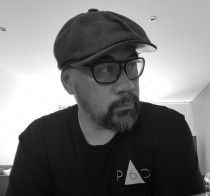Kirkpatrick Mariner reflects on the recent launch of the Government’s Digital Inclusion Blueprint / Te Mahere mō te Whakauranga Matihiko that he and his team at the DIA have been developing since 2017.
On 3 May the Government Digital Services Minister, Hon Dr Megan Woods, launched the Digital Inclusion Blueprint / Te Mahere mō te Whakauranga Matihiko at Hornby Primary School, Christchurch.
There was added significance to this occasion as this was six weeks after the mosque terror attacks in the same city, which amplified the issue of digital safety and trust across social media.
The Minister’s decision to hold it at Hornby Primary was a good one. One key focus of digital inclusion is to empower people in the increasingly digital world by equipping them with skills and knowledge to take advantage of opportunities and to recognise and avoid the bad.
Good news
The Blueprint is good news because it’s ultimately about well-being — enabling people individually, and collectively as part of the country’s economy, to benefit from what the digital world has to offer.
During the launch, I reflected on our journey: the people, the great initiatives occurring in New Zealand’s digital world, and how we need to do more and do it better.
While it’s times like this we need to celebrate milestones, we also need to get on with the actions. This includes establishing and sustaining conditions that mean ‘all of us have what we need to participate in, contribute to and benefit from a digital world.’
The Blueprint
The Blueprint is an important step to signal our digital intent for all New Zealanders. When we embarked on this development journey in 2017, we observed a lot of digital activity scattered across the country.
However, what we couldn’t articulate with clarity was: what does good look like and how do we measure it?
To do this, we need to have a better grasp of the digital inclusion landscape in New Zealand, who is doing what, better evidence and measurement, more collaboration that makes sense, and a coherent investment strategy.
If we can do this, it’ll go a long way to establishing conditions to inform policy positions and investment.
Māori digital aspirations — rejecting the deficit by default mindset
During her speech, the Minister acknowledged Te Whata Kōrero. Te Whata Kōrero is a vehicle that I hope will enable us to have meaningful conversations with Māori on their digital aspirations, and to support them in realising their goals (a future blog post will talk in more detail about Te Whata Kōrero).
This section of the Blueprint is, I hope, a tangible manifestation of the importance of effectively engaging with Māori at all levels when we talk to Māori as a Ti Tiriti partner.
My experience in the public sector demonstrates how by default, we tend to set the tone of our conversations through an inequality lens, when what we need to do is have transparent partnership dialogue with tāngata whenua.
Social and economic inequalities
As digital inclusion is a complex issue, there’s a level of sophistication required in our solutions. This means we need to think outside the box, and government is unable to do this on its own.
Digitally disadvantaged communities need to be involved in their digital solutions because it creates a sense of ownership and sustainability.
Issues such as poverty, culture and gender bias were considered barriers to uptake opportunities and maximise potential and therefore the benefits. This will require more thinking on how we develop and deliver interventions to close the disparities that exist in the digital world.
Adapting to the future
We’re hearing more stories about technological advancements such as AI and robotics, and it’s only a matter of time before it revolutionises how we think, create and deliver — the new normal.
We need to be prepared for this evolution and how we can sustain the pace and mitigate the consequences of being left behind.
There are several ways to do this: we can take an active interest and invest in some of the amazing work that our current digital champions are pioneering in NZ (for example, techweek).
We can start supporting the development of our innovation leaders to take on the new digital frontier, with particular focus on generation Z and women, who will be critical in closing the divide and advancing digital inclusion, so we become world leading.
Children leading the way on the day
The kids at Hornby School played an important role during the launch. They showed-up the adults through their waiata and the extraordinary digital knowledge they’d acquired thanks to the efforts of the Manaiakalani Trust. It filled me with confidence that this cohort will be well-prepared for their digital future.
Not everyone has this opportunity, so I’m always conscious that we need to do more and do it better — so that one day, hopefully, the digital world will be everyone’s world.


